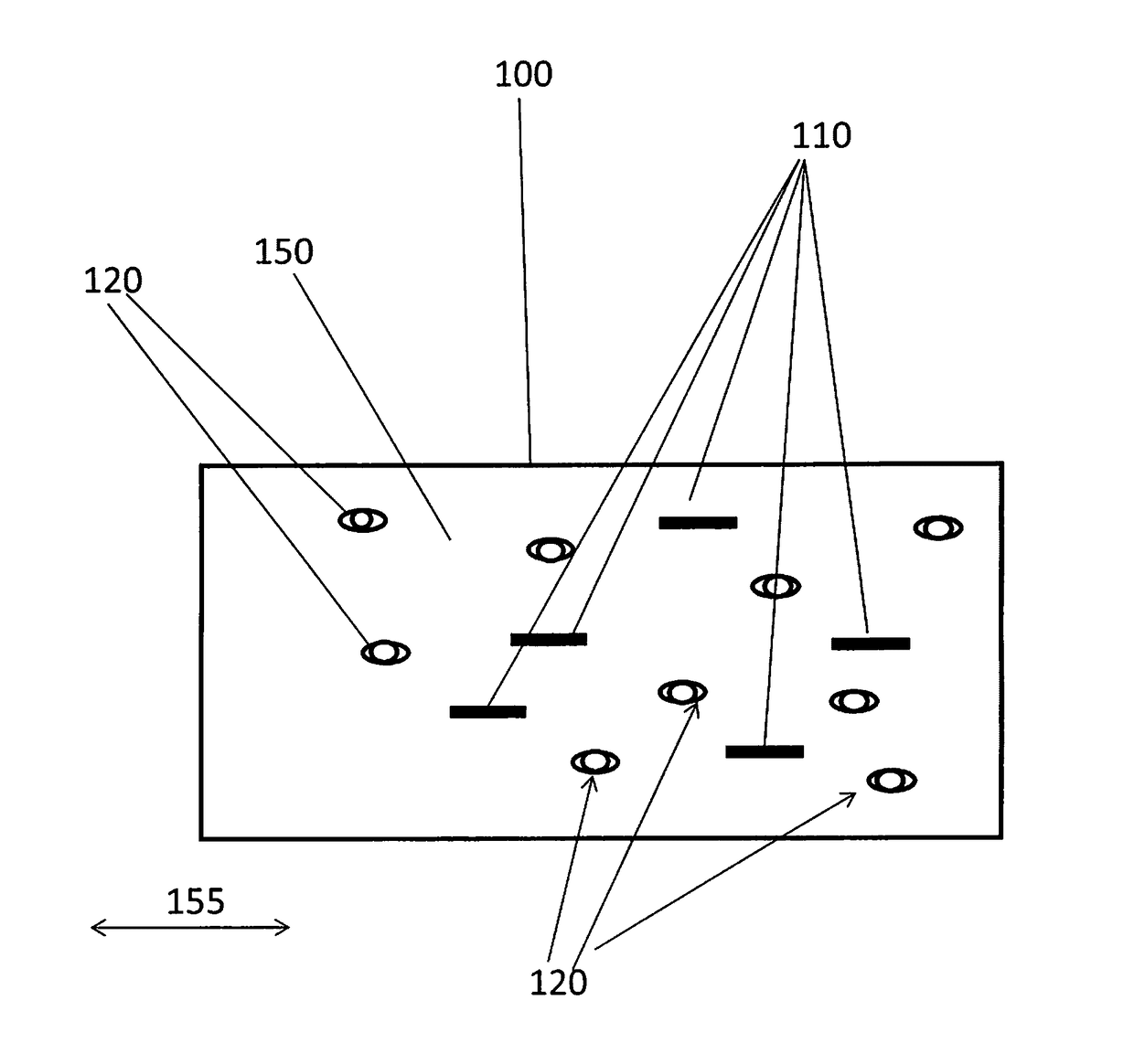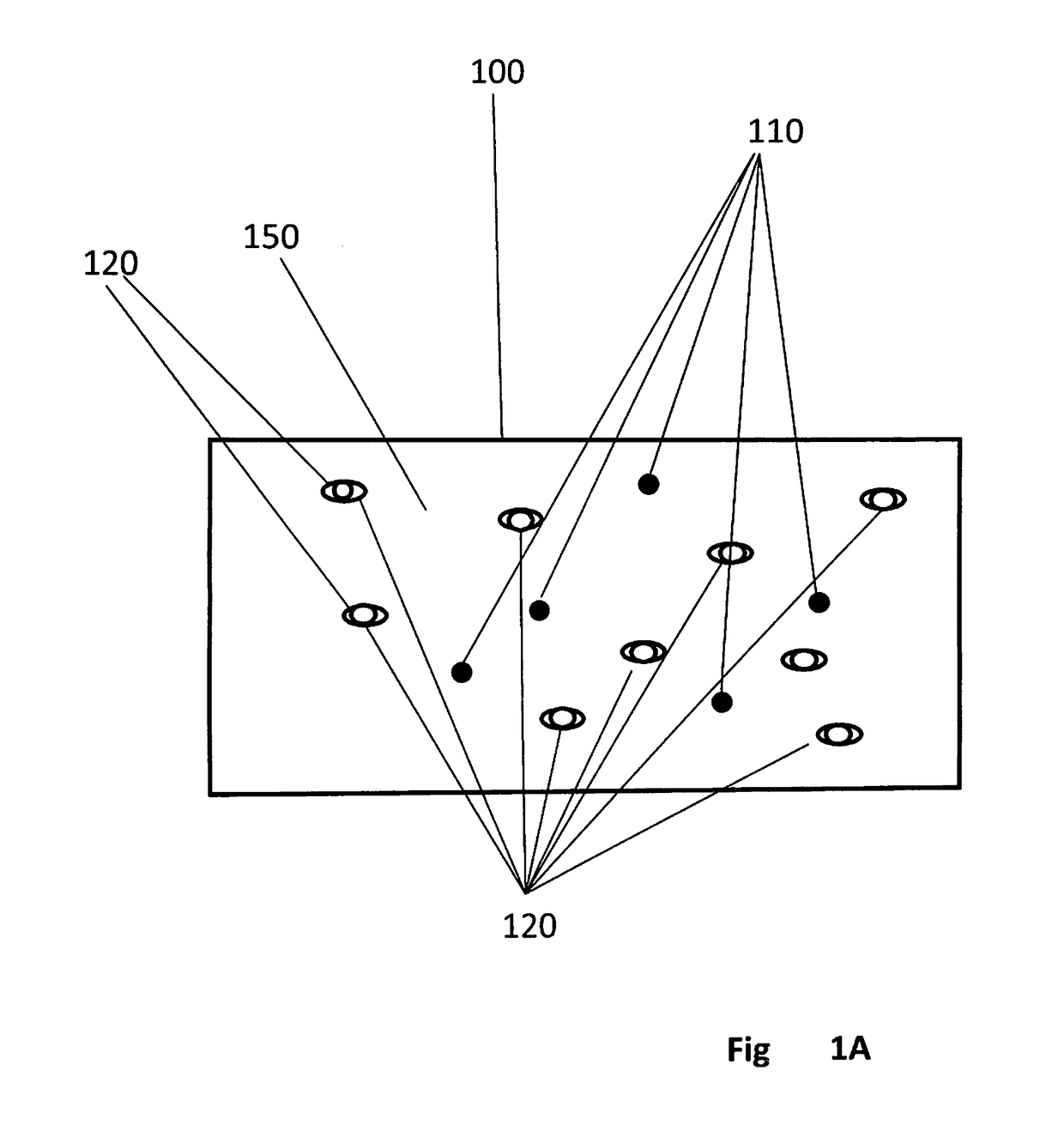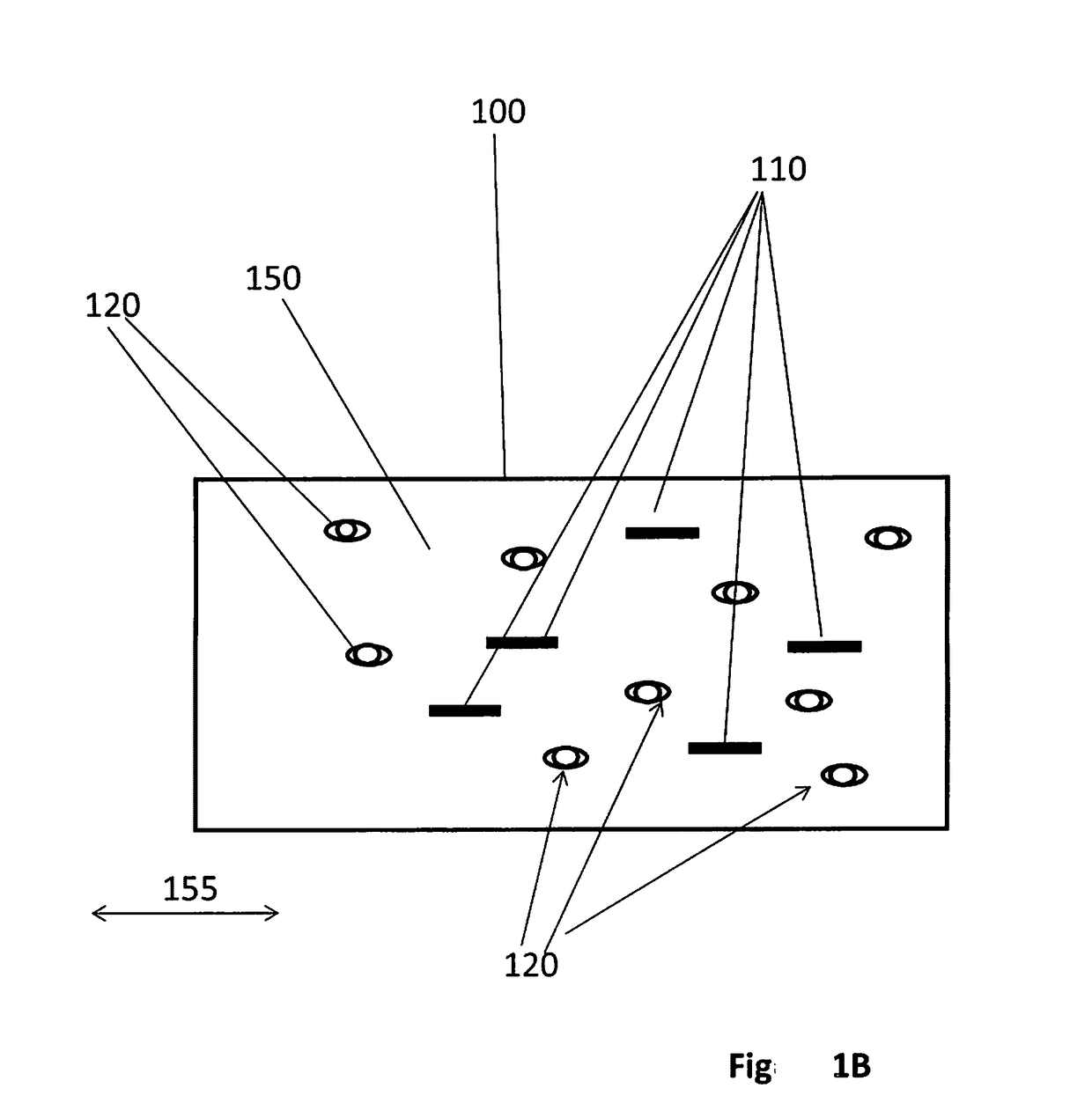Emitting film with improved light-out coupling
a technology of light-out coupling and film, applied in the field of light-out coupling, can solve the problems of energy loss, the selection of a particular polarization for back-illumination, and the loss of about 50% of light emitted by a non-polarized light sour
- Summary
- Abstract
- Description
- Claims
- Application Information
AI Technical Summary
Benefits of technology
Problems solved by technology
Method used
Image
Examples
example
[0088]A layer of the optically active structure, configured for emitting polarized light with efficient light out-coupling was prepared by alignment of nanorods within a polymer matrix which can be made to contain scattering voids. The nanorods were aligned by mechanical stretching of the polymer film. As a first step, the required amount of nanorods and cross-linked PMMA micro-beads (diameter 6 μm, refractive index 1.48, Tg=125° C.) were mixed with an aqueous solution of polyvinyl alcohol (PVA), typically 5-7% wt. The concentration of the beads was 6% wt of the PVA. The mixed solution was then cast into a mold and dried at 40° C. in an oven for 18 hours to form a film having thickness of 50 μm. To align the nanorods, the film was stretched uniaxially at 100° C. by a factor of 3. Since the stretching temperature was above Tg of PVA and below Tg of the PMMA beads, voids were formed around the polymer beads during stretching. The PMMA beads and PVA matrix have similar refractive index...
PUM
 Login to View More
Login to View More Abstract
Description
Claims
Application Information
 Login to View More
Login to View More - R&D
- Intellectual Property
- Life Sciences
- Materials
- Tech Scout
- Unparalleled Data Quality
- Higher Quality Content
- 60% Fewer Hallucinations
Browse by: Latest US Patents, China's latest patents, Technical Efficacy Thesaurus, Application Domain, Technology Topic, Popular Technical Reports.
© 2025 PatSnap. All rights reserved.Legal|Privacy policy|Modern Slavery Act Transparency Statement|Sitemap|About US| Contact US: help@patsnap.com



